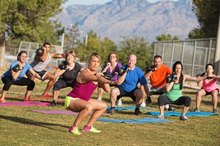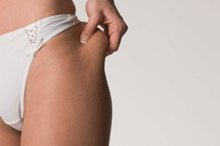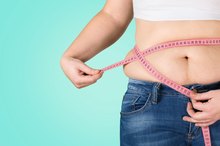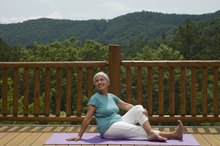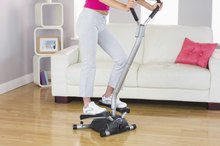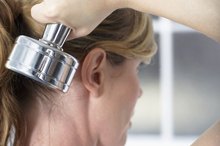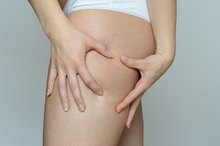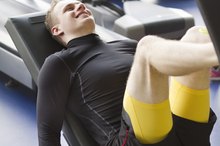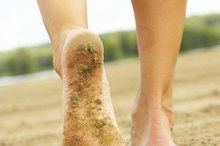What does fact checked mean?
At Healthfully, we strive to deliver objective content that is accurate and up-to-date. Our team periodically reviews articles in order to ensure content quality. The sources cited below consist of evidence from peer-reviewed journals, prominent medical organizations, academic associations, and government data.
- American Academy of Nutrition and Dietetics: Back to Basics for Healthy Weight Loss
- American Council on Exercise: Why Do Some People Have a More Difficult Time Losing Weight Than Others?
- ExRx.net: Thigh
- ExRx.net: Calves
The information contained on this site is for informational purposes only, and should not be used as a substitute for the advice of a professional health care provider. Please check with the appropriate physician regarding health questions and concerns. Although we strive to deliver accurate and up-to-date information, no guarantee to that effect is made.
How to Make My Curvy Legs Thin
The key to losing weight is a combination of a healthy diet and regular exercise, no matter what body part you want to target. Moreover, it's important to know that you can't really target only one area for weight loss, and you'll likely lose weight throughout your body when you try to shed weight in your legs.
Embark on a cardio-intense fitness plan. Cardio exercise burns more calories than targeted leg exercises and can help you shed the fat that's covering up lean muscle tissue. For even more benefits, try exercises that work your lower body, such as running, jumping rope, bicycling or swimming. For the most benefits, the Centers for Disease Control and Prevention recommends 300 minutes of cardio per week, or an hour of exercise every week day 1.
Exercises to Slim Hips, Thighs & Stomach
Learn More
Focus on creating healthy muscle tissue in your legs by doing targeted exercises. These routines burn only a minimal number of calories, but developing more muscle tissue can boost your metabolism. Try exercises such as calf raises, squats, lunges and calf presses. The more intense the exercise, the more muscle you'll build, but start slow and gradually build up to more reps. With many body weight exercises, you can hold weights to make the routine even more challenging.
Cut calories from your diet. Although it's possible to lose weight without dieting, eliminating excess calories can make the process go much faster, because you'll need to shed 3,500 calories through diet, exercise or a combination of the two for each pound you want to lose. Replace sugary, high-calorie beverages with water, and consider switching from potato chips and cookies to berries, nuts or fruit smoothies. Even cutting 100 calories a day from your diet can make a difference, so start slow and steadily build to a healthier diet.
Tips
Your body type can provide a clue to how easy it will be to lose weight. If your legs are naturally curvier, it may take you longer to lose weight than a svelte friend.
Warnings
If you're very overweight, have been sedentary for more than a few weeks or have any chronic health problems, talk to your doctor about your fitness plans before you begin trying to lose weight.
Related Articles
References
- Centers for Disease Control and Prevention: How Much Physical Activity Do You Need?
- American Council on Exercise: Why Do Some People Have a More Difficult Time Losing Weight Than Others?
- ExRx.net: Thigh
- ExRx.net: Calves
- A new predictive equation for resting energy expenditure in healthy individuals - PubMed
- Estimation of energy expenditure using prediction equations in overweight and obese adults: a systematic review - PubMed
- Validity of predictive equations to estimate RMR in females with varying BMI - PubMed
- Appendix 2. Estimated Calorie Needs per Day, by Age, Sex, and Physical Activity Level - 2015-2020 Dietary Guidelines | health.gov
- Protein intake and energy balance - PubMed
- Increased Dietary Protein as a Dietary Strategy to Prevent and/or Treat Obesity
- Effect of protein overfeeding on energy expenditure measured in a metabolic chamber - PubMed
- Dietary Protein and Energy Balance in Relation to Obesity and Co-morbidities - PubMed
- Effect of protein overfeeding on energy expenditure measured in a metabolic chamber - PubMed
- Presence or absence of carbohydrates and the proportion of fat in a high-protein diet affect appetite suppression but not energy expenditure in normal-weight human subjects fed in energy balance - PubMed
- Gluconeogenesis and energy expenditure after a high-protein, carbohydrate-free diet - PubMed
- A high-protein diet for reducing body fat: mechanisms and possible caveats
- A high-protein diet induces sustained reductions in appetite, ad libitum caloric intake, and body weight despite compensatory changes in diurnal plasma leptin and ghrelin concentrations - PubMed
- The effects of consuming frequent, higher protein meals on appetite and satiety during weight loss in overweight/obese men - PubMed
- Dietary Strategies for Weight Loss Maintenance - PubMed
- Dietary protein - its role in satiety, energetics, weight loss and health - PubMed
- High Compared with Moderate Protein Intake Reduces Adaptive Thermogenesis and Induces a Negative Energy Balance during Long-term Weight-Loss Maintenance in Participants with Prediabetes in the Postobese State: A PREVIEW Study - PubMed
- Effects of food form and timing of ingestion on appetite and energy intake in lean young adults and in young adults with obesity - PubMed
- Effects of fruit and vegetable, consumed in solid vs beverage forms, on acute and chronic appetitive responses in lean and obese adults - PubMed
- Sugar-sweetened beverages and weight gain in children and adults: a systematic review and meta-analysis - PubMed
- Resolved: there is sufficient scientific evidence that decreasing sugar-sweetened beverage consumption will reduce the prevalence of obesity and obesity-related diseases - PubMed
- Adverse metabolic effects of dietary fructose: results from the recent epidemiological, clinical, and mechanistic studies - PubMed
- Water-induced thermogenesis - PubMed
- Water drinking induces thermogenesis through osmosensitive mechanisms - PubMed
- Water-induced thermogenesis and fat oxidation: a reassessment - PubMed
- Immediate pre-meal water ingestion decreases voluntary food intake in lean young males - PubMed
- Water consumption increases weight loss during a hypocaloric diet intervention in middle-aged and older adults - PubMed
- Tea catechin and caffeine activate brown adipose tissue and increase cold-induced thermogenic capacity in humans - PubMed
- Caffeine enhances activity thermogenesis and energy expenditure in rats - PubMed
- The effects of caffeine intake on weight loss: a systematic review and dos-response meta-analysis of randomized controlled trials - PubMed
- Caffeine intake is related to successful weight loss maintenance - PubMed
- Preserving Healthy Muscle during Weight Loss
- Exercise acts as a drug; the pharmacological benefits of exercise - PubMed
- The essential role of exercise in the management of type 2 diabetes - PubMed
- A Systematic Review of Exercise Systematic Reviews in the Cancer Literature (2005-2017) - PubMed
- Benefits of exercise training on cardiovascular dysfunction: molecular and integrative - PubMed
- Exercise in the treatment of clinical anxiety in general practice - a systematic review and meta-analysis - PubMed
- The effects of a low-carbohydrate diet on appetite: A randomized controlled trial - PubMed
- Effects of low-carbohydrate and low-fat diets: a randomized trial - PubMed
- Effects of low-carbohydrate and low-fat diets: a randomized trial - PubMed
- Dietary Intervention for Overweight and Obese Adults: Comparison of Low-Carbohydrate and Low-Fat Diets. A Meta-Analysis - PubMed
- The Effects of a Low-Carbohydrate Diet vs. a Low-Fat Diet on Novel Cardiovascular Risk Factors: A Randomized Controlled Trial
- The Effect of Low-Carbohydrate Diet on Glycemic Control in Patients with Type 2 Diabetes Mellitus - PubMed
Tips
- Your body type can provide a clue to how easy it will be to lose weight. If your legs are naturally curvier, it may take you longer to lose weight than a svelte friend.
Warnings
- If you're very overweight, have been sedentary for more than a few weeks or have any chronic health problems, talk to your doctor about your fitness plans before you begin trying to lose weight.
Writer Bio
Van Thompson is an attorney and writer. A former martial arts instructor, he holds bachelor's degrees in music and computer science from Westchester University, and a juris doctor from Georgia State University. He is the recipient of numerous writing awards, including a 2009 CALI Legal Writing Award.
